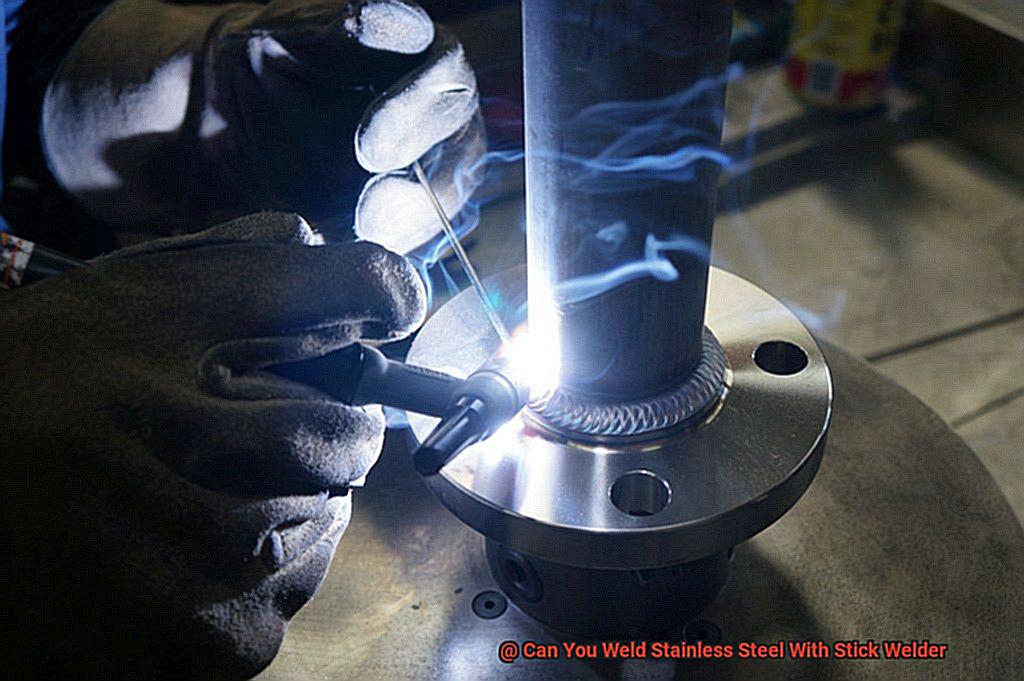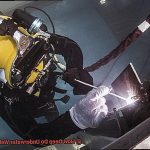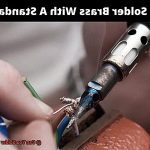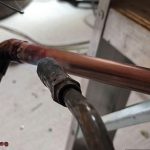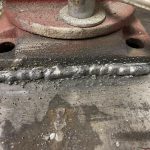Are you a welder with a passion for working with stainless steel?
If so, you may be wondering if it’s possible to weld this popular metal using a stick welder. The answer is yes, but it does require some specific knowledge and skills.
Stainless steel is used in many different applications, from kitchenware to medical equipment, thanks to its unique composition and characteristics. However, welding stainless steel requires a different approach than other metals due to its low thermal conductivity and high thermal expansion.
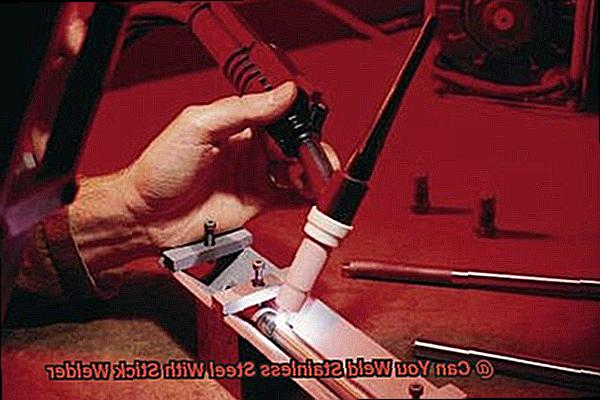
These traits make it more susceptible to warping and distortion during the welding process. While challenging, welding stainless steel with a stick welder can be done successfully with the right technique and equipment.
Stick welding relies on a consumable electrode that creates an arc, melting the base metal and electrode together to form a bond. However, if you use the wrong electrode or don’t take proper precautions, you risk poor weld quality, cracking, or corrosion.
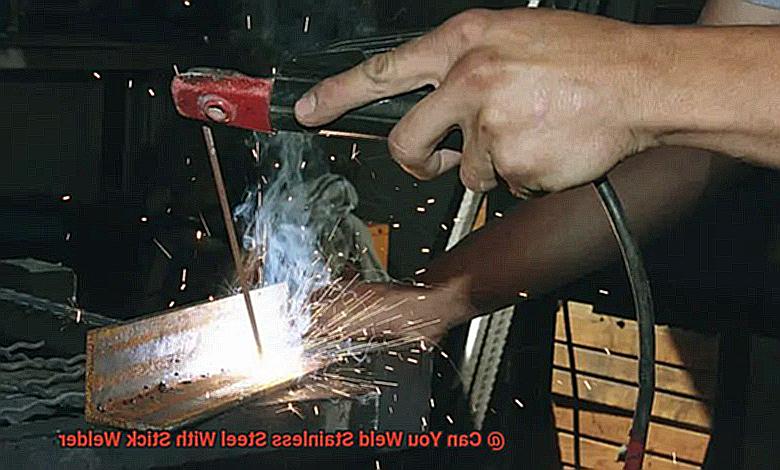
In this blog post, we’ll explore the techniques and equipment required to weld stainless steel with a stick welder effectively. We’ll discuss suitable types of electrodes for welding stainless steel, the importance of proper preparation before starting your project, and essential safety measures you need to take.
Let’s get started.
What is Stick Welding?
Contents
This versatile welding method uses an electrode coated in flux to create an electric arc for welding. While stick welding is portable and can be used in windy or wet conditions, it does require more skill and practice than other welding methods, such as MIG or TIG welding.
However, with proper training and practice, anyone can learn how to stick weld and achieve high-quality welds. When it comes to welding stainless steel with stick welding, it can be a bit challenging due to the metal’s lower thermal conductivity.
By using the right equipment and following proper technique, you can achieve a clean and smooth weld without warping or cracking the stainless steel.
Start with the right electrode with low hydrogen content to ensure a successful weld that is free from porosity or cracks. Additionally, using an electrode with a smaller diameter can help you control the heat better and avoid warping or distortion.
To get started with stick welding, you need a power source, electrode holder, ground clamp, and welding electrodes. The electrodes come in different sizes and materials, depending on the type of metal being welded.
It is crucial to select the right equipment and know the material being welded to ensure a strong and durable weld. Stick welding is commonly used in construction, pipelines, and repair work.
Challenges of Welding Stainless Steel with Stick Welder
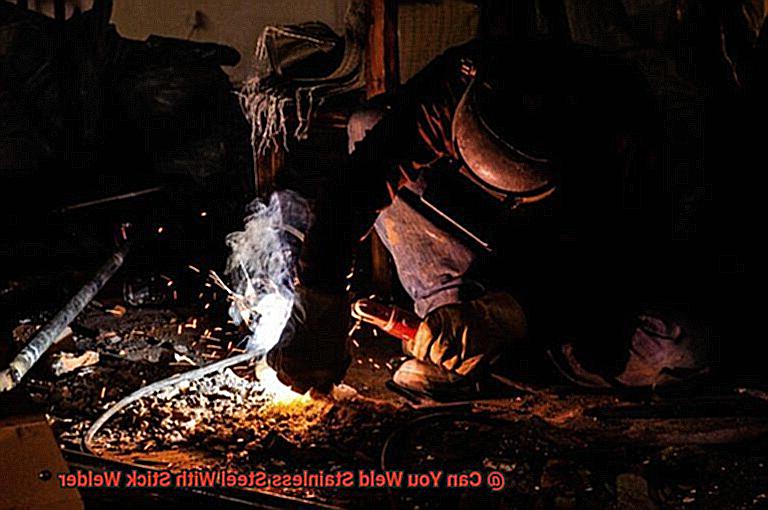
Welding stainless steel with a stick welder can be a challenging task, but with the right techniques and equipment, you can achieve a strong and high-quality weld.
Stainless steel has a lower thermal conductivity than mild steel, which means that it takes more time and effort to heat up and melt. Think of it like trying to melt a stubborn ice cube – you need more heat input and welding speed to get the job done.
But that’s not all. Stainless steel is also prone to warping and distortion during the welding process due to its high levels of thermal expansion and contraction.
It’s like trying to keep a balloon from popping when it’s filled with hot air – you need proper clamping and fixturing techniques to keep everything in place. To make things more challenging, stainless steel is highly reactive with oxygen, which can lead to the formation of surface oxides that can negatively affect the quality of the weld.
It’s like trying to paint a rusty old car without first sanding off the rust – you won’t get the smooth finish you’re looking for. To prevent this, it’s crucial to use a shielding gas such as argon or helium during the welding process to protect the weld pool from atmospheric contamination.
And let’s not forget about the risk of burn-through or excessive heat input. Stick welding requires a high amperage setting, which can be tricky to manage without the proper technique.
It’s like cooking a steak on high heat without adjusting the temperature – you’ll end up with a burnt mess instead of a juicy steak. To avoid this, it’s important to use smaller diameter electrodes and adjust the amperage setting accordingly.
Types of Stainless Steel for Welding
Welding stainless steel can be a complex process, but with the right knowledge and techniques, you can create welds that are strong, durable, and resistant to corrosion.
One of the most important factors to consider when welding stainless steel is the specific type of stainless steel you are working with. Let’s dive into the four common types of stainless steel used for welding and their unique properties.
First up is Austenitic Stainless Steel – this non-magnetic grade of stainless steel is the most commonly used type for welding. It boasts high levels of nickel and chromium, which give it exceptional resistance to corrosion.
In addition, this type of stainless steel has impressive formability and weldability, making it a popular choice across many industries. Next up is Ferritic Stainless Steel, which contains lower levels of nickel and chromium than Austenitic Stainless Steel.
As a result, it is less expensive but also less resistant to corrosion. Ferritic Stainless Steel is frequently used in automotive applications and for decorative purposes.
Martensitic Stainless Steel is a high-strength type of stainless steel that contains higher levels of carbon than other types. This makes it more difficult to weld, but with proper welding techniques, it can still be successfully welded.
It is often found in industrial applications such as turbines and blades. Finally, Duplex Stainless Steel combines both Austenitic and Ferritic Stainless Steels.
This type boasts excellent corrosion resistance and high strength, making it ideal for use in chemical processing and oil and gas industries. However, due to its complex microstructure, welding Duplex Stainless Steel can present some challenges.
So, when it comes to welding stainless steel, selecting the right type of stainless steel is crucial. Each type has its own unique properties that can impact the welding process.
Choosing the Right Electrode for Welding Stainless Steel
Welding stainless steel is an art form, and just like any artist, a welder needs the right tools to create a masterpiece.
And when it comes to stick welding, choosing the right electrode is like picking the perfect paintbrush – it can make or break the end result. So, what makes the electrode so critical?
Well, it’s the heart of the stick welding process, and it determines the strength and quality of the weld. But not all electrodes are created equal.
They come in different types, each with its unique properties and characteristics. When it comes to welding stainless steel, there are three primary types of electrodes: E308L-16, E309L-16, and E316L-16.
E308L-16
Think of it as your go-to spice that you use in almost every dish. It’s designed for welding 304L stainless steel, which is one of the most commonly used types of stainless steel in various applications.
Its low carbon content provides excellent corrosion resistance, making it an excellent choice for most applications. Next up is the E309L-16 electrode – this one is like a spicy chili pepper that adds heat and kick to your dish.
E309L-16
It’s ideal for welding 309 stainless steel, which is commonly used in high-temperature applications such as boilers and furnaces. With more chromium and nickel than the E308L-16 electrode, it’s more resistant to heat and scaling.
E316L-16
Finally, we have the E316L-16 electrode – this one is like a premium ingredient that takes your dish to the next level. Specifically designed for welding 316L stainless steel, known for its high resistance to corrosion and pitting, the E316L-16 electrode contains molybdenum, which enhances its strength and corrosion resistance.
Now here’s where things get crucial – matching the type of stainless steel being welded with the appropriate electrode. Using the wrong electrode can lead to weld defects such as cracking or lack of fusion, which can be disastrous.
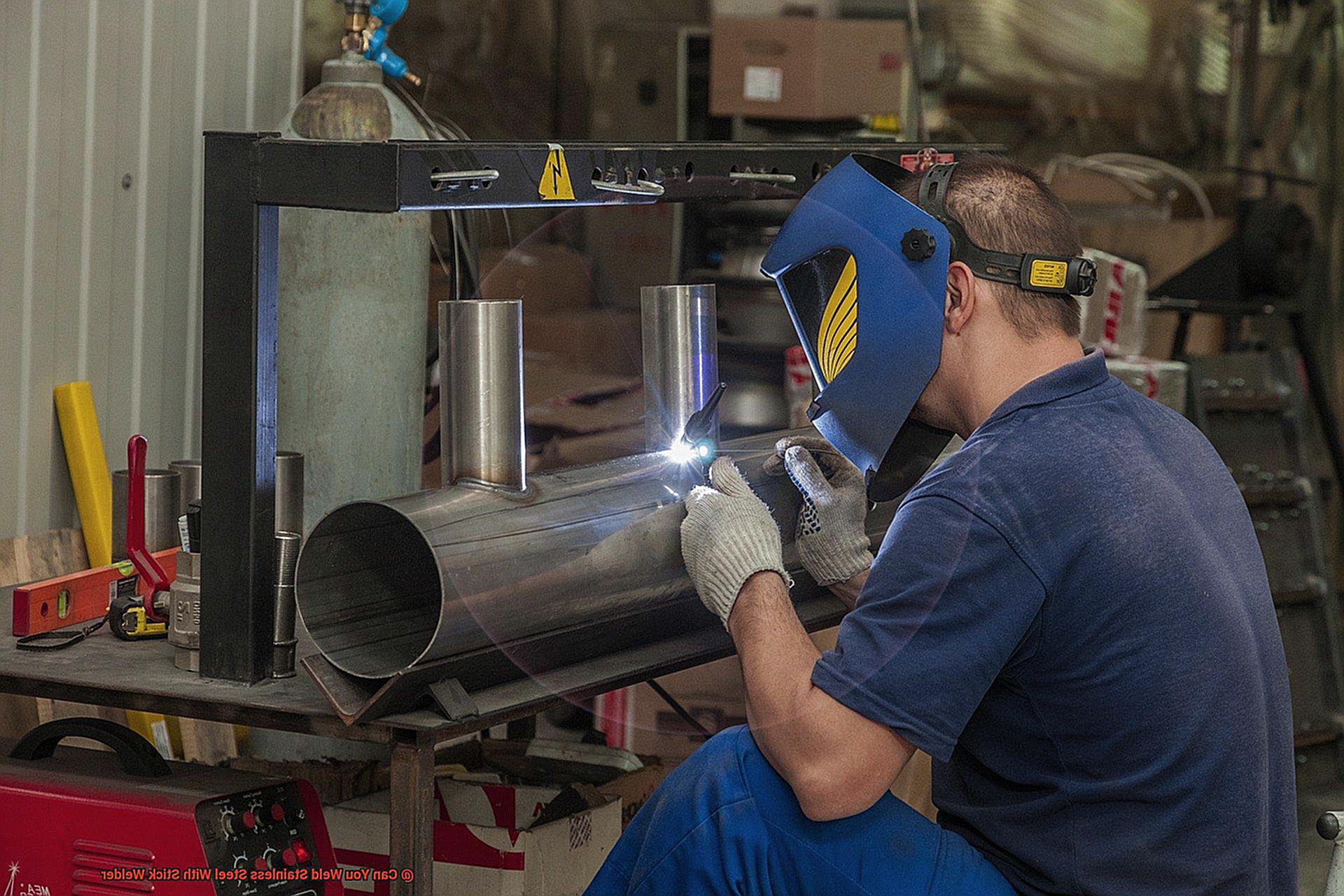
It’s also essential to consider the thickness of the material being welded and adjust the amperage accordingly. In conclusion, choosing the right electrode for welding stainless steel with a stick welder is like picking the perfect paintbrush for a masterpiece.
By selecting the appropriate electrode based on the type of stainless steel being welded and adjusting the amperage accordingly, welders can achieve high-quality results that resist corrosion and last for years to come.
Tips for Successfully Welding Stainless Steel with a Stick Welder
Welding stainless steel with a stick welder can be a challenging task, but with the right tips and techniques, you can achieve a strong and durable weld. Here are five tips to help you successfully weld stainless steel with a stick welder.
Choose the Right Electrode
The first step to welding stainless steel is choosing the right electrode. For this type of metal, a low hydrogen electrode like 308L is recommended.
This electrode produces a stable arc and clean weld that’s resistant to cracks and other defects.
Prepare the Surface Properly
Stainless steel is prone to oxidation and contamination, which can weaken the weld. That’s why it’s crucial to clean and prepare the surfaces thoroughly before welding.
Use a wire brush or grinder to remove any impurities and solvents like acetone or alcohol to degrease the surface.
Maintain Proper Technique
Maintaining proper technique during welding is essential for producing a uniform and strong weld.
Keep a consistent arc length, angle, and travel speed while welding, and preheat the metal before welding to prevent cracking and ensure a smoother weld.
Adjust Amperage Settings
Stainless steel requires more heat than other metals, so higher amperage settings may be necessary. Adjust the amperage settings accordingly to ensure good penetration and a strong bond.
Inspect the Finished Weld
After welding, it’s important to clean up any slag or spatter and inspect the finished weld for any defects or imperfections. This helps ensure the longevity and strength of the weld.
khN1e1fMDbM” >
Conclusion
In conclusion, welding stainless steel with a stick welder is not impossible, but it requires the right knowledge and equipment.
Stick welding uses an electrode coated in flux to create an electric arc for welding. However, using the wrong electrode or not taking proper precautions can lead to poor quality welds, cracking, or corrosion.
Therefore, it is crucial to select the appropriate type of stainless steel and electrode for welding as each has its unique properties that can impact the process. Stainless steel has lower thermal conductivity than mild steel, which means it takes more time and effort to heat up and melt.
Moreover, stainless steel is prone to warping and distortion during the welding process due to its high levels of thermal expansion and contraction. To prevent this, proper clamping and fixturing techniques are essential.
You should also adjust amperage settings accordingly, maintain proper technique while welding, and inspect the finished weld for any defects or imperfections.
